By Robin Esrock
Any outdoor adventure will place you square in the habitat of Canada’s wildlife. That said, there’s a tremendous amount of space for animals to get as far away as possible from any human interaction. Unlike the Galapagos or animals in Africa, northern wildlife has been hunted with a feverish obsession unparalleled in human history. When the fur trade boomed, financing both the French and British Empires, mammals of the north were basically obliterated. In just half a century, some 30 million bison were slaughtered, with just a few hundred remaining. Over-trapping wiped out an estimated 60 million beavers, while the prized pelts of sea otter, lynx, mink and other furry creatures were shipped by the boatload to Europe. The hats looked great unless you were the pelt. Bears, moose, wapiti, whales, deer and other creatures were also on the menu.
Today, Canadian wildlife is protected by law and hunting quotas, but it’s worth noting that these are the offspring of the most cautious of survivors. Chances are you’ll only see wildlife if they want to be seen, and doing so easily warrants a high-five of delight (unless a bear is chasing you, which warrants you running faster than your companions). With that said, let’s meet some creatures that might share your trail.
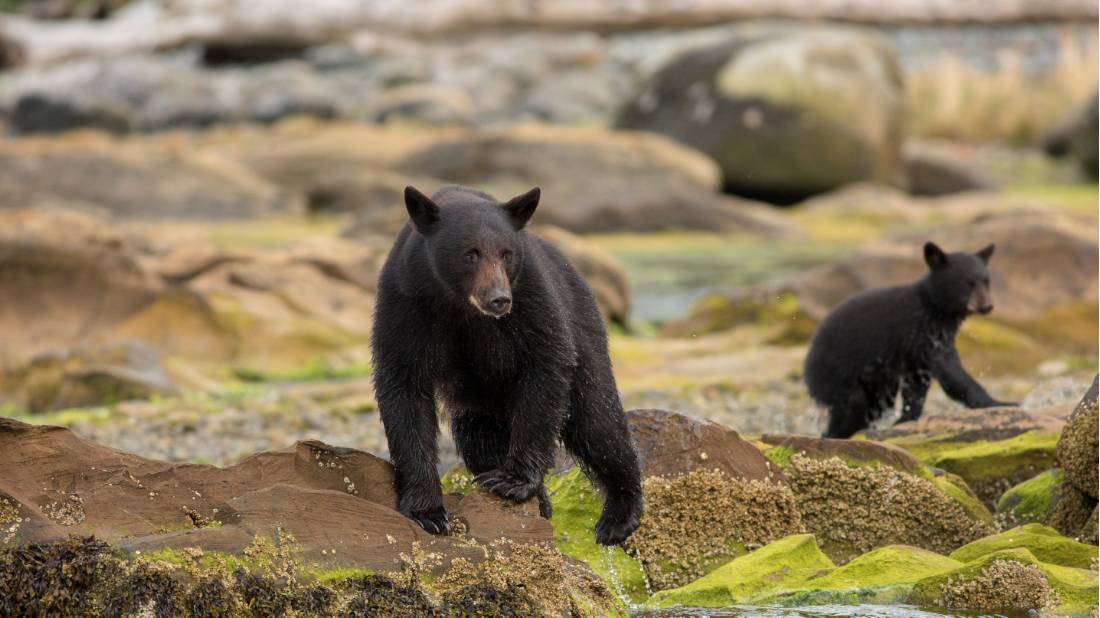
Black Bears
For all our itineraries except Prince Edward Island
If you see a bear, chances are it’s a black bear. Parks Canada estimates there are around 380,000 black bears in Canada, although a single bear’s home range can cover up to 200 square kilometres. In perspective, there are just 20 to 40 black bears in the entire 6641 square kilometres of Banff National Park and just 90 black bears in the 11,228 square kilometres of Jasper National Park! Black bears will eat just about anything, and their easy habituation causes constant issues in urban areas. As the signs say, a fed bear is a dead bear. Other than mammas and their cubs, black bears are usually solitary, shy, and avoid wildlife they cannot eat. Sharp claws help them climb trees to avoid predators (few hikers expect to encounter a bear hovering above them!) All bears have an acute sense of smell and will typically scatter into the woods at the first sign of your presence.
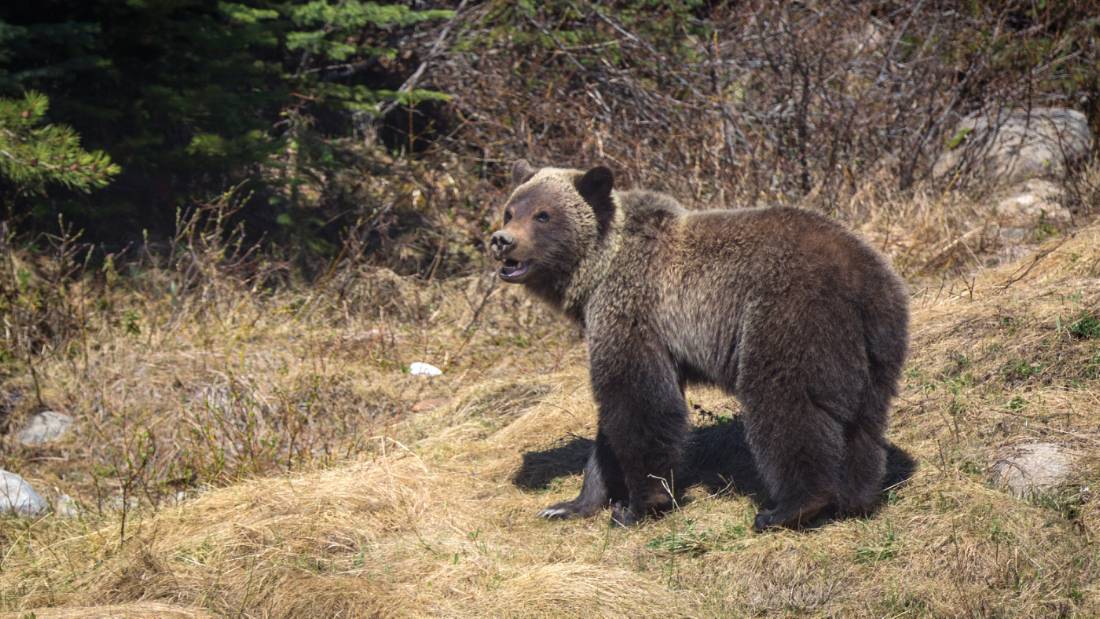
Brown Bears
For our British Columbia, Alberta and Yukon itineraries.
There are around 25,000 grizzlies in Canada, of which 15,000 inhabit British Columbia. The other 10,000 grizzlies live in the Canadian Rockies, the Yukon, the Northwest Territories, southwestern Nunavut, and northern Manitoba. Larger and more aggressive than a black bear, the distinguishing trait of a Grizzly is a distinct shoulder hump, not its brown fur. Grizzlies hibernate for 5 – 8 months, so forget about seeing one in the winter. In spring, they feast on bulbs, rodents and grasses around inlets, meadows and the sub-alpine tundra. Summer is a berry and insect feast, and you’ll often find grizzlies at salmon spawning grounds, fattening up for the winter ahead. As with all bear encounters, you must remain calm, avoid eye contact, and make yourself heard while hiking or cycling to avoid surprises.
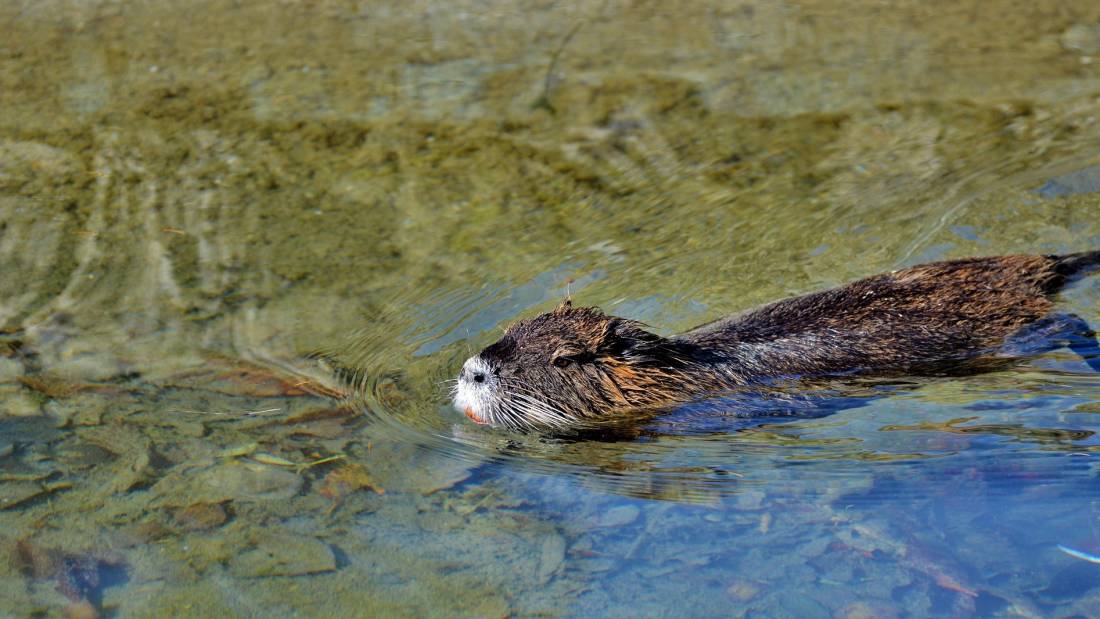
Beavers
For all our itineraries
Canada’s national animal may be a rodent, and in step with the country’s geographical size, it is the second largest rodent in the world. Colonies of beavers are found in lakes and creeks throughout the country. With their large, flat tail and webbed hind legs, beavers move better in water than on land and are famous for adapting their environment with dams crafted from branches and mud. The largest beaver dam – in Wood Buffalo National Park - is almost 800m long! Some lakes are well known for their beaver population, but chances are slim you’ll randomly encounter one in the wild. Visitors to Canada should also note: Beaver Tails – a fried, doughnut-like pastry – is not an actual beaver’s tail. That said, beavers do feature on the menu of northern Indigenous communities.
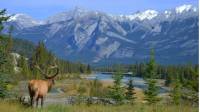
Wapiti
For our British Columbia and Alberta
More commonly known as elk (which is what Europeans call moose), wapiti is the world’s second-largest deer. Like the bison (which European settlers also misnamed as buffalo), wapitis were hunted to the verge of extinction. Several species, like the eastern and Merriam’s elk, were completely wiped out. Today, wapiti in Canada are primarily found in BC and the Rockies, living up to 20 years, and are known for their impressive antlers. With their numbers recovering, they are no longer a threatened species and have become a popular game species for hunters and game farmers, who enjoy its lean, high-protein meat. A bull wapiti (correctly called a stag) can weigh up to 450kg with huge antlers, and both genders are known for their vocal roars, grunts, hoots and squeals. Like most animals, you’ll most likely encounter wapiti during early mornings or late evenings. About 200 wapiti live in the Bow Valley close to Banff, often seen by visitors off the highway or close to town.
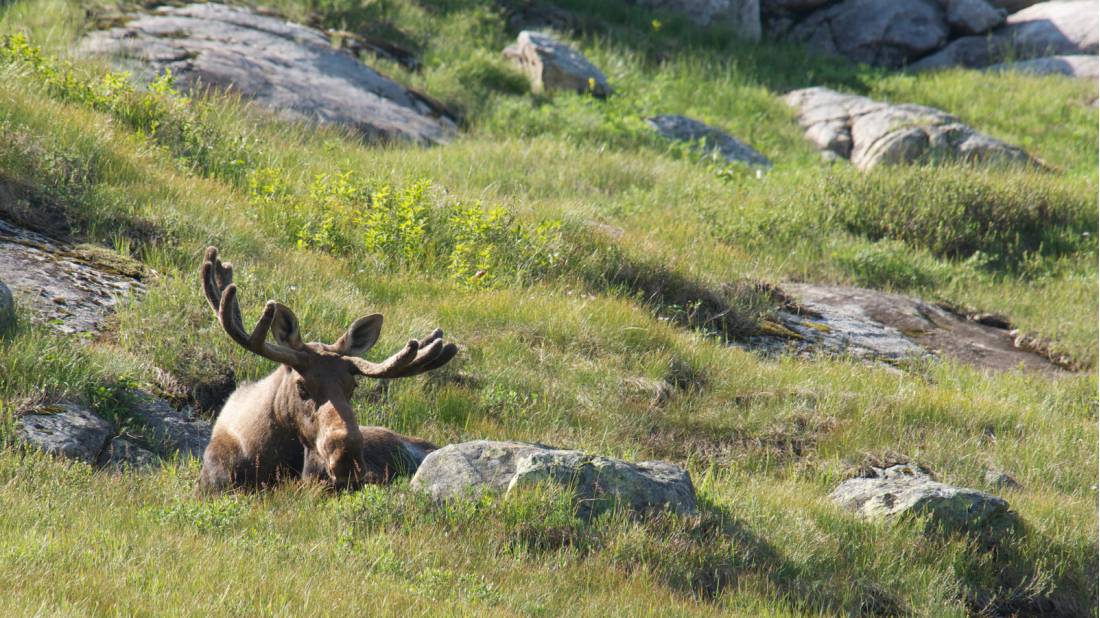
Moose
For all our itineraries except the West Coast Trail
The largest member of the deer family is a true beast of the forest. Their habitat spans the entire country except the Arctic and Vancouver Island, and while you won’t encounter any on the West Coast Trail, moose have proliferated across Newfoundland and Labrador, becoming a much-feared road hazard! Adult bulls can tower over 2 metres tall at the shoulder, weighing nearly a ton with 6-foot-wide antlers. They’re far too big to worry about animal predators, but collisions with vehicles kill plenty of moose (and occasionally people) every year. Moose are fast: a baby moose can outrun a human before it’s a week old! Although moose are reclusive and solitary, it’s not entirely uncommon to spot this voracious herbivore in meadows, forests and lakes, especially in Algonquin Provincial Park. It’s not too common either, so enjoy the encounter if you’re lucky enough to have it.
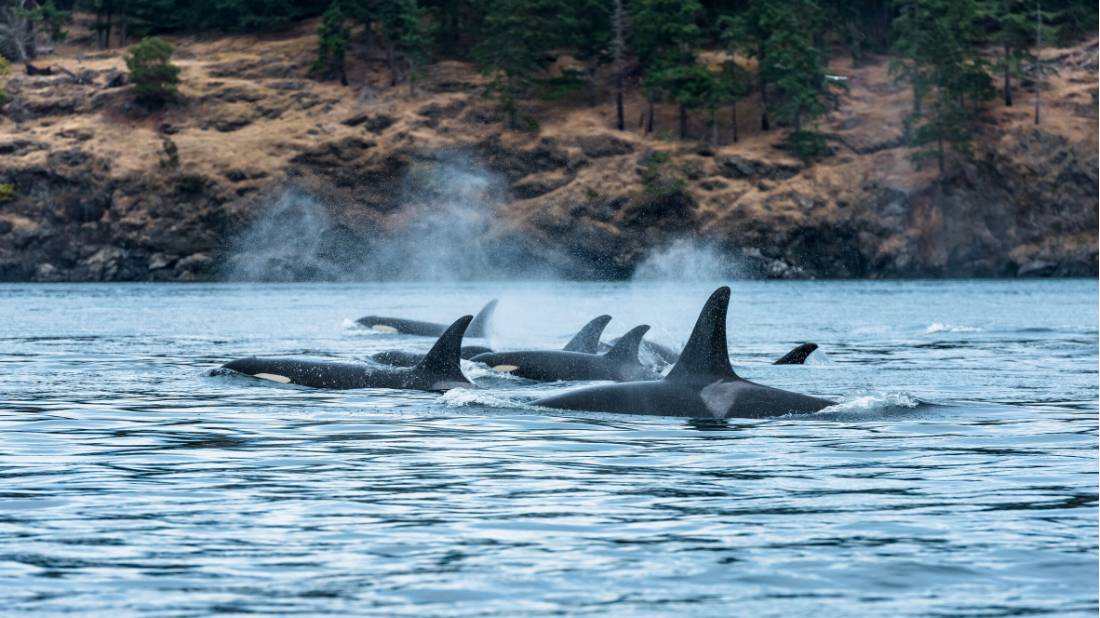
Whales
For our British Columbia and Newfoundland itineraries.
We’ve already had a deep dive into the 30 species of whales you might encounter hiking off the East or West Coast of Canada. Humpbacks and minke are the most common, migrating between the Caribbean, Mexico and Hawaii. If you’re lucky, you might also see resident or transient orca pods while beluga whales swim south from the Arctic each summer into the Gulf of St Lawrence. There are strict laws in place that govern how boats and people can interact with whales in Canada.
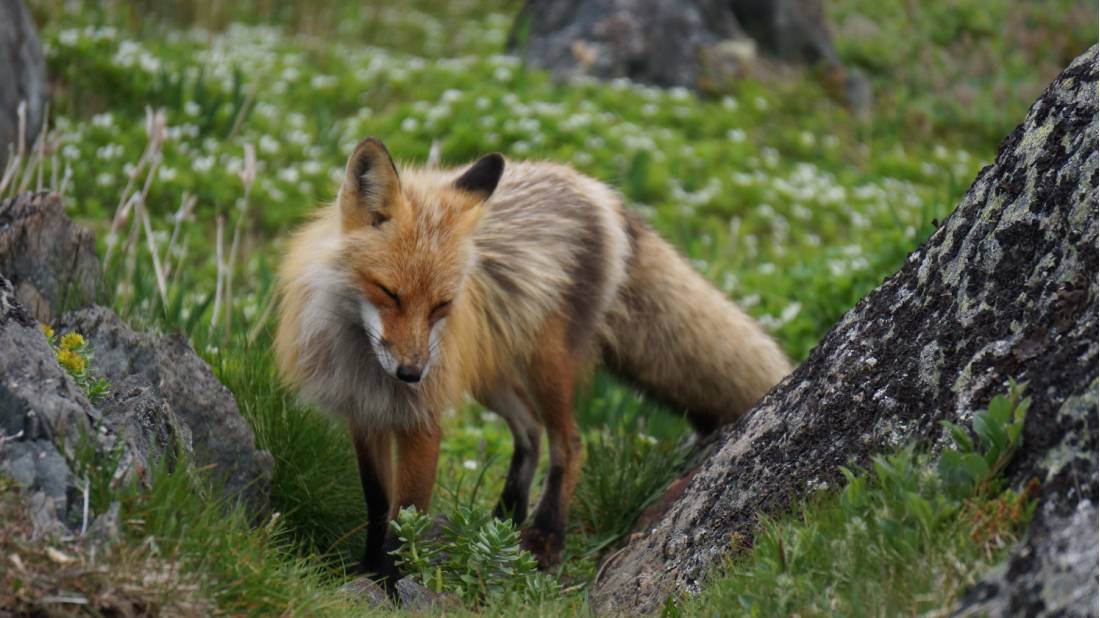
Red Fox
For all our itineraries
This curious mammal is found in every province and territory, as comfortable in forests, mountains and urban areas as they steal chickens from the henhouse. Fantastic Mr Fox may be resourceful, but he is not nearly as sly as the fairy tales suggest. Skittish foxes are also not always red, as their coats range from black and silver to brown. They’ll eat just about anything: small mammals, insects, snakes, eggs, fish and berries. Red foxes are the largest and most common fox on the continent. Adapted for night hunting with excellent hearing, a fox will hear you from miles away and, given the value of their fur, will likely make sure they skulk safely away. A group of foxes, by the way, is called a skulk or leash.
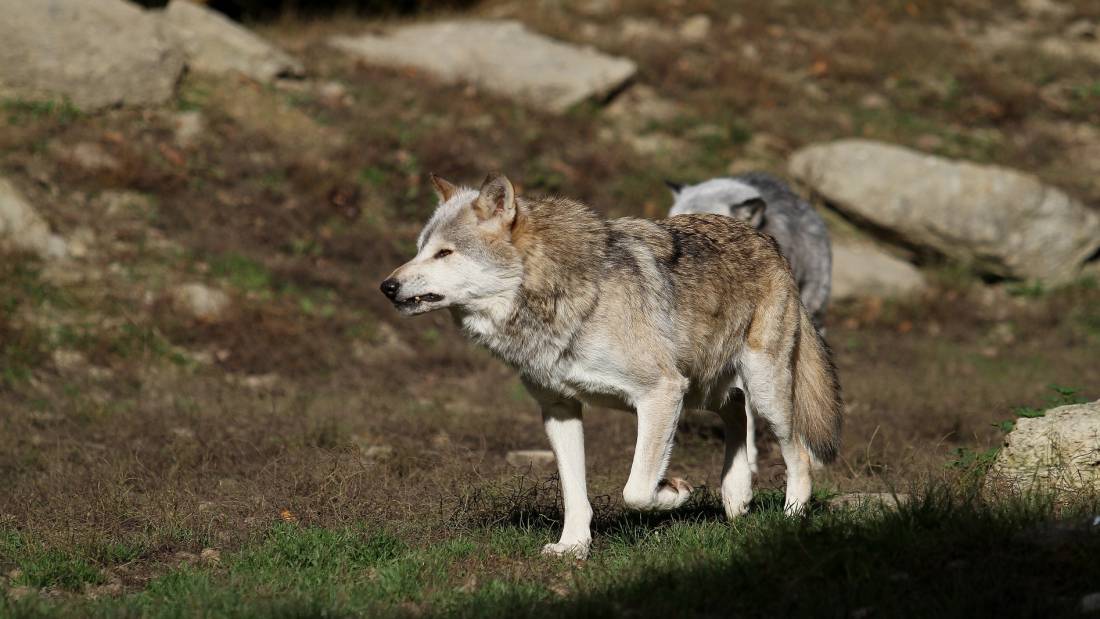
Wolves
For all our itineraries except Atlantic Canada
I’ll just come out and say it: after two decades of exploring this country, I’ve yet to see a wolf. I did spot a wolverine once in the remote tundra of northern Yukon, but a wolf? Canis lupus would rather have nothing to do with humans, and who can blame them? Bounties on their hides in Ontario and Quebec only ended in the early 1970’s! Hunters still kill hundreds of the country’s apex land predators in Canada every year, but wolves are increasingly protected and better managed by wildlife authorities. While the grey wolf roams ten provinces and all three territories, there are various sub-species depending on their range. They’ll hunt mammals in packs according to a strict social hierarchy, and despite their fearsome reputation, they are only successful about 15% of the time. Wolves often go hungry for days and eat up to 20% of their body weight in one go. These are all great facts to chew on, especially if you happen to come across a wolf print on the beach like I did on the West Coast Trail. Seeing an actual wolf in the Canadian wilderness, however, is like winning the lottery. If you do encounter an animal in its natural habitat, remember to maintain a respectful distance and follow safe, ethical and responsible wildlife guidelines.
Robin Esrock is the bestselling author of The Great Canadian Bucket List.